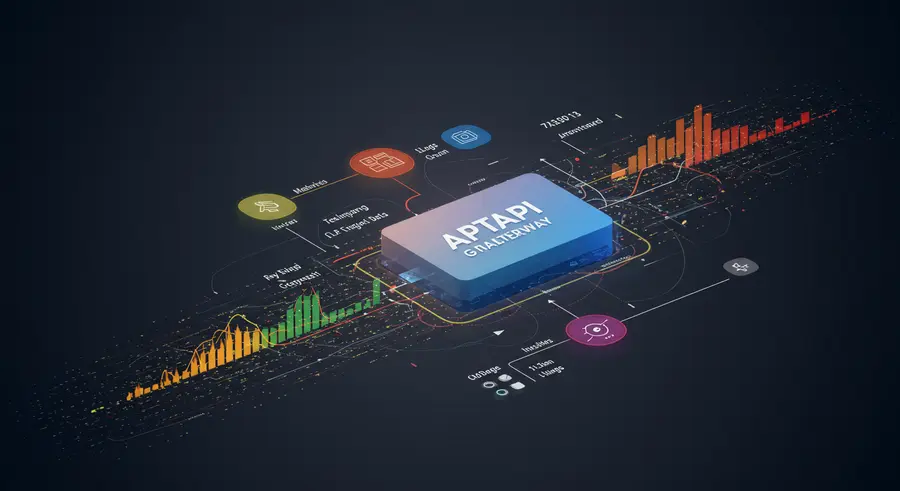The Crucial Role of Observability in API Gateways
In the complex landscape of modern microservices architectures, an API Gateway stands as a critical ingress point, directing traffic, enforcing policies, and securing your backend services. But with great power comes great responsibility – and the need for comprehensive visibility. This is where API Gateway observability becomes indispensable. It's not just about knowing if your gateway is up or down; it's about understanding why it's performing the way it is, what users are experiencing, and how to proactively address potential issues before they impact your business.

What is API Gateway Observability?
Observability, in the context of an API Gateway, refers to the ability to infer the internal states of the system by examining its external outputs. It's a superset of monitoring, encompassing three core pillars:
- Metrics: Numerical measurements collected over time, such as request rates, error rates, latency, and resource utilization (CPU, memory). These provide a quantitative understanding of the gateway's performance and health.
- Logs: Immutable, timestamped records of discrete events that occurred within the gateway. Logs offer detailed contextual information about requests, responses, errors, and system activities, crucial for debugging and post-mortem analysis.
- Traces: Represent the end-to-end journey of a single request as it traverses through various services behind the gateway. Tracing helps visualize the flow, identify bottlenecks, and pinpoint latency issues across distributed components.
Together, these pillars provide a holistic view, transforming raw data into actionable insights, much like an AI-powered financial companion provides granular market insights for informed decision-making.
Why is it Crucial for API Gateways?
The API Gateway is often the first point of contact for external consumers. Any issues here can cascade and severely impact user experience. Robust observability offers several key benefits:
- Proactive Issue Detection: Identify anomalies and potential problems before they escalate into outages.
- Faster Root Cause Analysis: Quickly pinpoint the source of errors or performance degradation by tracing requests and analyzing logs.
- Performance Optimization: Understand latency patterns and resource consumption to fine-tune gateway configurations and improve response times.
- Security and Compliance: Monitor for suspicious activities, unauthorized access attempts, and ensure compliance with security policies through detailed logging.
- Capacity Planning: Gain insights into traffic patterns and resource usage to anticipate future scaling needs.
- Improved User Experience: Ultimately, a well-observed gateway leads to more reliable and faster API interactions for your users.
Key Areas of Observability for API Gateways
1. Request and Response Metrics
Tracking the volume and nature of API calls is fundamental. Key metrics include:
- Total Requests: Volume of incoming API calls.
- Error Rates (e.g., 4xx, 5xx): Percentage of failed requests, indicating client-side or server-side issues.
- Latency/Response Times: Time taken for the gateway to process and respond to requests.
- Throughput: Number of requests processed per second.
- Data Transfer Rates: Inbound and outbound data volume.
These metrics help in understanding the load, identifying performance degradation, and spotting sudden spikes or drops in traffic.
2. System Health and Resource Utilization
Monitoring the gateway's underlying infrastructure is vital:
- CPU Usage: How much processing power the gateway is consuming.
- Memory Usage: Amount of RAM being used.
- Network I/O: Network activity, crucial for identifying bottlenecks.
- Disk Usage: For logging and configuration storage.
- Process Health: Ensuring all gateway components are running correctly.
3. Detailed Logging
Configuring comprehensive logging is paramount. Logs should capture:
- Request Details: HTTP method, URL path, headers, client IP address, user agent.
- Response Details: Status code, response headers, response size.
- Timing Information: Latency at various stages of processing.
- Error Messages: Detailed descriptions of any failures.
- Security Events: Authentication failures, authorization denials, rate limit hits.
Effective log aggregation and analysis tools are essential to make sense of the vast amount of log data generated.
4. Distributed Tracing Integration
For microservices, tracing is a game-changer. An API Gateway should inject correlation IDs into requests and propagate them across downstream services. This allows you to:
- Visualize the entire request flow from the gateway to the deepest backend service.
- Identify which specific service or network hop is introducing latency.
- Understand dependencies between services.
5. Business-Level Analytics
Beyond technical metrics, an API Gateway can provide valuable business insights by analyzing API usage patterns:
- API Consumption by Client/Developer: Who is using your APIs and how much?
- Popular Endpoints: Which APIs are most frequently accessed?
- Monetization Metrics: If applicable, track usage for billing or quota enforcement.
These insights can drive product development and business strategies, similar to how market sentiment analysis tools offer a deeper understanding of market dynamics.
Best Practice Tip: Implement a robust alert system based on your observability data. Define clear thresholds for critical metrics (e.g., error rate spikes, high latency) to ensure your team is notified immediately when issues arise.
Tools and Technologies for API Gateway Observability
Many tools can help achieve comprehensive observability:
- Monitoring & Alerting: Prometheus, Grafana, Datadog, New Relic, Splunk.
- Log Management: ELK Stack (Elasticsearch, Logstash, Kibana), Splunk, Sumo Logic, DataDog Logs.
- Distributed Tracing: Jaeger, Zipkin, OpenTelemetry.
- API Management Platforms: Many commercial API Gateway solutions (e.g., Apigee, Kong, AWS API Gateway) come with built-in observability features.
Conclusion
API Gateway observability is not an optional extra; it's a fundamental requirement for operating resilient, performant, and secure microservices architectures. By diligently collecting and analyzing metrics, logs, and traces, you gain the clarity needed to troubleshoot effectively, optimize performance, and ensure your APIs consistently deliver value. Investing in a strong observability strategy for your API Gateway is an investment in the overall health and success of your digital services.